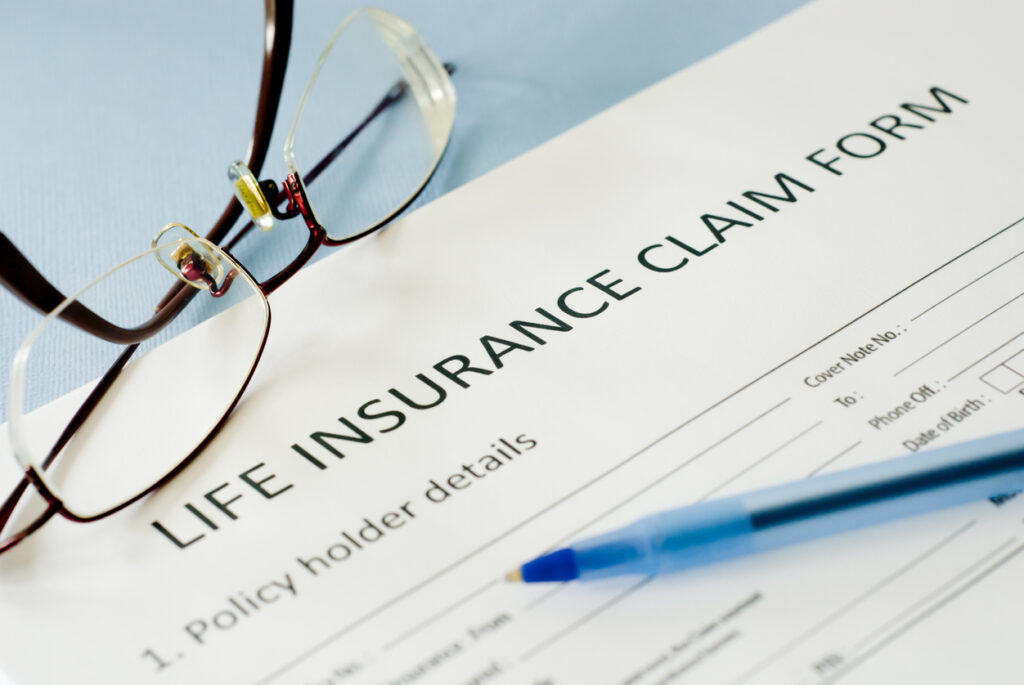Key Terms
- “Making partner” is a huge milestone and the biggest promotion for a Biglaw career.
- To make partner, you’ll need to excel at the job, have interpersonal soft skills, and communicate your profitability to the firm.
- The average age to make partner is in your mid to late-thirties, but age or experience is not dispositive.
At most workplaces, career advancement is a series of promotions, each with a new title, paygrade, and fresh set of responsibilities. In Biglaw, however, there is effectively only one promotion: associate to partner. Therefore, “making partner” is an extremely significant milestone for a career at a law firm.
Typically hired straight out of law school under the Cravath System and compensated in lockstep using the Cravath Scale, Biglaw associates work tirelessly to prove themselves worthy of partnership over roughly eight or more years. Biglaw tends to have an up-or-out culture (if not outright policy), where the majority of attorneys will either make partner or eventually transition elsewhere. To accelerate your legal career to the point of becoming a law firm partner, there’s no doubt it takes a lot of hard work.
Making partner is a drastic change from the rank of associate. There is a newfound literal, legal, and personal sense of ownership for your work, which will now require new business development, supervisory responsibilities, and client relationship management. From bringing in potential clients to consistently delivering on those client expectations, there’s a reason making partner is so celebrated in the legal industry: it’s not easy to do.
While Biglaw associate salaries are nothing to scoff at, partners unlock a new level of earning potential since they share in the firm’s profits. Some firms will internally distinguish between equity and non-equity partnership, where non-equity partners gradually take on partner responsibilities but do not share in the profits quite yet. Some argue that non-equity partners are glorified senior associates, but the reality of non-equity partnership will vary between firms.
Understanding how to strategically pursue partnership will benefit anyone in the legal profession, even if the goal is not specifically partnership at a large law firm. Because of the up-or-out culture, excelling as an associate means increased job security, predictable raises, greater professional development, and a stronger network both within and without.
Even those who plan on exiting Biglaw in a timely fashion should aim to be the best partnership-bound associate possible since one’s reputation and professional skillset will be carried wherever one goes, especially if you’re working at top law firms. If law firm partnership or being named as a senior partner are your goals, you need to know how to get buy-in from others at the firm.
You need to get into Biglaw first
Adam Gropper, in his book Making Partner: The Essential Guide to Negotiating the Law School Path and Beyond states that the law firm career is essentially a career in sales. While making sales pitches to clients may be the most salient example, a strategic career in Biglaw will also include constant sales pitches as a law student interviewing with firms, as an associate working under partners, and eventually as a partner candidate to the entire firm partnership.
If you are uncomfortable with this idea, perhaps Biglaw is not your destined long-term career path. There are, of course, other reasons to pursue Biglaw, including prestige, paying off student loans, exit opportunities, intellectually stimulating work, and more.
After determining if Biglaw could be the path for you, getting the job becomes a necessary first step. Generally, the Cravath System dictates who gets hired into Biglaw. The abridged strategy is to attend a prestigious law school, attain the best grades possible, network, and dominate your on-campus interviews. While most Biglaw careers begin shortly out of law school, experienced attorneys can also lateral in and use their experience to land somewhere along the partnership track.
Becoming a star associate
David Maister coined the three archetypal roles within a professional service firm: grinders, minders, and finders.
Grinders tend to be new associates that are eager to please and will energetically work long hours on detail-oriented grunt work like research and document review.
Minders have greater market value than grinders, have substantive experience and expertise, and work to deliver on projects that keep clients happy.
Finders locate and acquire revenue-generating business that minders and grinders will work to deliver on. The associate life is one of the grinder and then the minder, all to become the finder (i.e., partner).
Some of the qualities of a star associate are quantifiable. Meeting and exceeding billable hour requirements is definitely one sign of a well-performing associate. Billable hours can signal a number of positive qualities: satisfying partners and clients with reliable work, revenue generated for the firm, the grinder’s mindset, and a general sense of presence and energy as a productive salaried associate.
While billable hours requirements may be helpful for staying the course on the lockstep associate pay scale, they are far from sufficient for attaining partnership (unless you bill such a ridiculous amount that the firm loses money by not retaining you).
Partnership will also require a large set of soft skills, or as Gropper defines it, “personal attributes that enable someone to interact effectively and harmoniously with other people.”
Gropper’s top soft skills in rank order of positive impact are:
- Determine and satisfy partner preferences
- Be rigorous
- Manage workload effectively
- Seek specific feedback and take action
- Make others look good
- Document performance results annually
- Have a partner’s mindset
- Secure an effective sponsor
Many of these soft skills blend in with each other. For example, effective communication with a partner about his or her preferences will lead to a more predictable workload and give insight into the partner’s mindset. Doing this can help an associate “manage upwards” for an improved work-life balance which in turn helps make a Biglaw career more sustainable. Rigorous work makes others look good and is more likely to satisfy a partner’s preferences.
A successful associate starts as the ideal grinder that incorporates these soft skills: be impressionable, eager, coachable, tireless, and a team player all while producing high-quality substantive work product. After a few years of experience as a grinder, the mid to senior associate (approximately fourth years and above) will continue to grind while also transitioning into minder responsibilities in preparation to stand out as a partner candidate.
Preparing for partnership: Minding your own business
Making partner ultimately hinges on whether or not you can sell yourself. You as an individual are a business that you are selling to the firm’s existing partnership, convincing them that including you will make the firm more profitable. Here, it becomes important to develop a track record of both excellent minding and finding. In addition to continuing to develop soft skills, a partner candidate should seek to become a valuable business asset by doing excellent substantive legal work and keeping others happy both inside and outside the firm.
Minders should deliver quality work and aim to be recognized for it. Meeting billable hours is a given, but what sets apart an associate preparing for partnership is that the billable hours are substantially collected on.
While associates’ productivity is measured by hours billed, partners’ productivity is measured by fees collected. (All billed hours can generate revenue, but poor quality or irrelevant work isn’t always charged to the client.) Ensuring that the work you do is ultimately contributing to bottom-line revenue and profit is crucial.
In addition, you want to be recognized for your substantive work and stand out where you can. Possible ways to accomplish this are: (1) taking on work unclaimed by others to become the go-to person on those matters, (2) developing and marketing a niche or even sub-niche expertise within an area of law, and (3) secondment opportunities with major existing clients of the firm to showcase your effective legal skills and business acumen.
Take continuing legal education (CLE) courses where you can. Becoming recognized as an expert in your practice area, and an exceptionally productive one at that, can only help your case for partnership.
Another important aspect of the ideal partner candidate is managing professional relationships. There are, of course, the client-related sales and service aspects. Any client-facing interaction should be treated with best efforts and because you are now closer to the top of the chain-of-command, promptness, accountability, and effective counseling become more salient qualities. A minder can shine, keeping clients happy and improving work efficiency, by being active with case staffing and billing processes.
Other external relationships such as visibly showcasing expertise to bar associations, attending industry events, joining industry-specific organizations, and generally being active in one’s community will be viewed favorably. In addition to external relationships, internal relationships will also be noticed. As an associate becomes more senior, leadership roles, supervision and coordination skills, making referrals for well-performing laterals, and mentoring young lawyers will all stand out as positive qualities to convince a firm that a partner candidate can generate profit.
Making the final step into partnership
Making partner requires approval from existing partners in the firm (typically a majority vote, but sometimes there are veto powers). The specific processes and criteria for the selection of new partners will differ from firm to firm, but Gropper suggests making your case both in writing and orally even if it is not required.
In writing, Gropper says to prepare “an extensive memorandum documenting all your years of service and all your accomplishments both statistically (hours billed and collected) and substantively (notable wins for various clients).” If the firm has a guide detailing specific criteria for partnership selection, this memorandum should address each criterion as specifically as possible. In addition, the memorandum should provide a summary of your business plan with goals and how you intend to generate new clients.
Like in sales, your written materials may be entirely overlooked, and some partners will only want to hear you sell yourself in the moment. The oral case should be similar to the written memorandum and serve as a narrative of your professional self, detailing your past contributions and professional aspirations looking forward.
Average age to make partner at a law firm
Since most first-year associates will have been hired straight out of law school and partnership consideration can start roughly after the eighth to tenth associate year, the average age of a law school graduate will be indicative of what the average age to make partner is.
The most common age to graduate law school is between 25 and 28 years old, so the average age to make partner probably falls somewhere around 35 to 38 years old. However, making partner is much more determined by profitability and personal characteristics rather than age (although being older could make breaking into Biglaw more difficult).
Important considerations for you to make partner
While partnership may start as early as an associate’s sixth year (usually as a non-equity partner like at Kirkland & Ellis), toiling away as an associate for any number of years does not guarantee partnership. Eligible senior associates will commonly have to try for partnership multiple years in a row.
Consider the size of the firm. If you are a solo practitioner, you’re immediately a partner! Small firms tend to have a less rigid procedure for partner selection but may care greatly about having an established book of business. Midlaw or barely-Biglaw firms could have a faster, but still structured and predictable path to partnership. The largest law firms will have plenty of senior associates to consider for partnership each year and there will be stiff competition for each year’s class.
Also consider the growth, stagnation, or decline of the law firm and its relevant practice areas. If a law firm is growing and expanding their business, there are going to be more partner positions to fill each year, either by promotion or laterals. A firm that is slowing down may not have the bandwidth or desire to take on new partners since that means more people looking to draw from the same pool of profits.
On the other hand, firms that struggle with departures and morale issues occasionally do promote new partners to retain top performers and to reinforce their associates’ expectations for an upwards career trajectory.
The size and how well financially-leveraged your office is can affect the acceptable partner-to-associate ratio. If your practice group or even firm as a whole has taken on too many partners, even the best candidates must compete with firm economics. It isn’t unreasonable to say that making partner might mean you have to move to a different city’s office, move firms for the right opportunity, or even wait until a top-heavy senior partnership begins to retire.
![]()
Joseph Kim is a 2L at Notre Dame Law School. Joseph grew up in California where he developed an interest in working with music, powerlifting, and bowling. He’s been a member of the FIRE community since before law school and plans to pursue FatFIRE following graduation.




